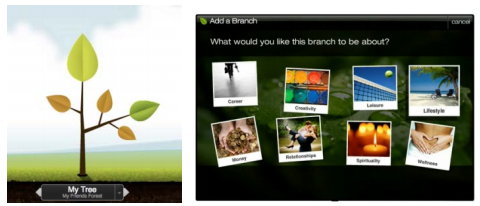Persuasive technologies for promoting physical fitness, good nutrition, and other healthy behaviors have been growing in popularity. Despite their appeal, the evaluation of these technologies remains a challenge and typically requires a fully functional prototype and long-term deployment. In this project, we attempt to help bridge this gap by presenting a method for using heuristic evaluation to evaluate persuasive technologies. We developed a set of 10 heuristics intended to find problems in persuasive technologies that would affect persuasive elements, adoption, or long-term effectiveness of the technologies. We compared the performance of Nielsen’s heuristics to our heuristics on two persuasive technologies using 10 different evaluators. Using our heuristics, evaluators found more severe problems more frequently. In addition, the issues that found only by our heuristics were more severe and more relevant to persuasive, cultural, and informational issues of the interfaces evaluated. Our method can be helpful in finding problems in persuasive technologies for promoting healthy behaviors earlier in the design process. This work was published at IHI 2010.


10 Heuristics for Persuasive Health Technologies
- Appropriate Functionality: The technology should meet usability, mobility, visibility, and durability needs according to the settings in which it might be used. The technology should function effectively in the user’s environment by being easy to use and integrate into one’s daily life and routine.
- Not Irritating or Embarrassing: The technology should not irritate or embarrass the user, even after using the product repeatedly and regularly over a long period of time. This relates to aspects such as the presence of the product itself in the user’s environment, the degree to which the technology intrudes upon the user’s daily life, the timing, type, accuracy, and amount of feedback given, and the capability for customized settings and privacy controls.
- Protect Users’ Privacy: The system allows users to keep personal information private. Users can control what, when, to whom, how, and how much information is made public. Any public information is kept abstract.
- Use of Positive Motivation Strategies: The technology recognizes when target behaviors have been performed or goals have been met and uses positive reinforcement strategies to promote continued progress. Avoids use of punishment for failure to perform target behaviors or meet goals.
- Usable and Aesthetically Appealing Design: The visual design of the technology is attractive and appealing and adheres to basic usability standards. The design captures and sustains the user’s interest, enhances user engagement with the technology, and also adds to the credibility and usability of the product.
- Accuracy of Information: The technology should not inaccurately record or misrepresent the user’s behavior (for instance, due to limitations in automatic sensing capabilities or the inability to use the device in certain environments). If necessary—to obtain an accurate, comprehensive account of behavior—the technology should allow users to edit data records and/or manually input additional data that the device is incapable of detecting automatically.
- Appropriate Time and Place: Information, feedback, and assistance are provided at an opportune time and place (i.e., when and where it is needed, at the most appropriate time, and in the most effective manner).
- Visibility of User’s Status: The technology should always keep the user informed about progress toward goals through appropriate feedback within reasonable time. Feedback is accurate and easily understood (e.g., though use of abstract displays, summary data, etc.).
- Customizability: Users should be able to customize aspects of the technology, for example, creating personalized goals and customizing product settings (public/private data, interface, etc.). However, customizability should not interfere with persuasive aspects.
- Educate Users: Users should understand why the actions they do promote positive behaviors, and how their goals are being met. This includes which specific behaviors lead to the accomplishment of a larger goal. The technology should engage users in an active process whereby they learn information and gain skills relevant to their goals, particularly skills that would enable them to continue to progress towards goals even in the absence of the technology.
People
Julie Kientz
Eun Kyoung Choe
Brennen Birch
Robert Maharaj
Amanda Fonville
Chelsea Glasson
Jen Mundt
Publication
- Kientz, J. A., Choe, E. K., Birch, B., Maharaj, R., Fonville, A., Glasson, C., & Mundt, J. (2010, November). Heuristic evaluation of persuasive health technologies. In Proceedings of the 1st ACM International Health Informatics Symposium (pp. 555-564). ACM.
